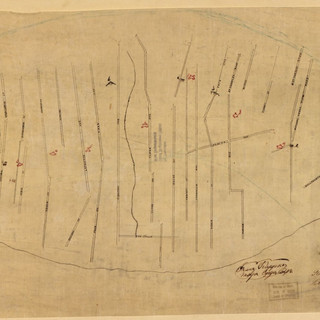The Forgotten Civil War Forts of St. Louis
- St. Louis Paranormal Research Society
- Apr 5, 2018
- 5 min read
When people think of Lemp, the images of ghosts and the thrill of exploring the Cherokee Cave usually comes to mind. Very few know of the history of the area before the Lemp Brewery. The truth is before 1864; the Lemp Brewery was nothing more than a stone building with a copper brewing pot. During the Civil War, St. Louis was in a strategic location and keeping it safe was essential to the preservation of the Union. The loss of St. Louis would essentially cut the country in half and would deny the Union to the vital wealth and resources of the West. When the Civil War started, there was an effort to hand the City of St. Louis over to the Confederacy, but a handful of patriotic St. Louisians, led by General Lyons were able to hold St. Louis until Union forces could secure the city. To the South of St. Louis was the Ead’s Shipyard (today the location of the River City Casino), the major construction site for the U.S. Navy's City Class Ironclads. These nearly indestructible iron-plated ships patrolled the rivers and confluences of the Mississippi. They were floating artillery platforms that could barricade rivers and lay siege to towns. Capturing the Ead's Shipyard would have ended the production of the City Class Ironclads and allowed the advance of the Confederacy up the banks of the Mississippi River. Another important target was the St. Louis Arsenal. A vital storehouse for munitions and a resupply/staging area for Union troops, losing the St. Louis Arsenal would have been a disaster for the Union’s Western Armies. St. Louis was also a wealthy industrial city, and losing the city would provide the Confederacy with a vital industrial hub. Needless to say, the loss of St. Louis would make it tough, if not impossible for the Union to win the war.
A plan was developed to fortify St. Louis. There already existed Fort Bellefontaine to the North and Jefferson Barracks to the South. Iron and Timber Clads from the Ead's Shipyard were already starting to patrol the Mississippi. The only vulnerability was to the West. There was no natural barrier or fortifications to prevent an attack. Missouri being a very Southern-leaning state, and its sympathy for the South could make it very easy for Confederate troops to mount an invasion of St. Louis. Once captured, St. Louis would be very hard to take back. To prevent this, the Army Core of Engineers decided upon building a series of fortifications to protect the Western approaches to St. Louis.
In July 1861, the construction of ten earthen fortifications began. At the time these forts were state of the art. Each fort had several large cannons that could hit targets at long distances, barracks for troops, powder magazines, and tall earthen walls with deep fording trenches. These were daunting obstacles for an advancing army to face. They also guaranteed that an advancing army could not lay siege to the City of St. Louis.
These fortifications had another advantage; they narrowed any potential battle front. For an army to advance into St. Louis, they would either have to capture several of these earthen fortifications or accept having to fight in between two of them. These forts narrowed the battlefront and gave a strategic advantage to the Union Army garrisoned inside the city. St. Louis during the Civil War became a fortress, guaranteeing that its industry would be at the disposal of the Union. The security of St. Louis’ allowed its economy to grow, and to become one of the wealthiest cities in the United States. This new found wealth would play an enormous part in the city’s growth and expansion until the 1950’s.
What did these fortifications have to do with the saga of the Lemp Family? Nothing, other than their location. The construction of the Lemp Brewery didn't start until 1864. During the Civil War, the Lemp Family were not the brewery moguls we think of today. William Lemp Senior’s place in St. Louis society is shown by his rank of Orderly Sergeant. If Lemp Family were prominent members of St. Louis Society, William Lemp Sr. would have been granted an officer's commission, not made a Supply Sergeant. At the time, the Lemp Family was nothing more than well to do tavern keepers. The Lemp Family only brewed enough beer to supply their South Second Street Tavern. Adam Lemp was able to purchase the site of the current day Lemp Brewery in 1840, and built a small building for brewing. In the days before modern refrigeration, the main appeal of the site was the Cherokee Caves, a convenient place to ferment his increasingly popular lager beer.
Lemp Brewery is located in an area once known as the St. Louis Common Fields. At the time, the Common Fields were an unincorporated part of St. Louis County. The Commons contained numerous small farms, factories, and shops. Many of the city’s influential citizens had summer homes and owned land in Common Fields. The Commons were seen as a highly prized piece of real estate, and its defense was considered vital to the well-being of St. Louis.
It was decided that three fortifications were to be built in the St. Louis Common Fields. Fort One stood near Marine Avenue; Fort Two stood upon what is today the Lemp Granary and The Lemp Brewery's Liquid Carbonic Building, and Fort Three stood on Twelfth Street near the old Third District Police Station.
Fort Two constructed on the Lemp Brewery grounds was a three hundred foot by three hundred foot fortification, with massive cannons and deep fording trenches at the base of its walls. There were probably at least two hundred men garrisoning the fort. These earthen fortifications were impressive sites and a testimony to the value placed on the St. Louis Common Fields of during the Civil War.
Today, these fortifications are a nearly forgotten part of St. Louis history. By 1875, all but one of these fortifications was torn down. The land was simply too valuable to allow these derelict fortifications to remain. From 1860 to 1870, the population of St. Louis had doubled, and its land was worth three to four times as much as it was in 1861. St. Louis was growing into becoming “America’s Fourth City.” St. Louis would become a vibrant city with enormous wealth, industry, and prosperity. Along with St. Louis’ rampant growth, the Lemp’s increasing production of lager beer would allow their Western Brewery to expand onto the land once occupied by Fort Two.
As American history unfolded, it would prove equally as unkind to both the Lemp Family and the City of St. Louis. With the passage of Prohibition, the Lemp Family legacy would turn from one of wealth and prosperity to one of tragedy and sorrow. Prohibition would make the Lemp Brewery as obsolete as the old forts. After two World Wars, St. Louis would become the Western anchor in America's Rust Belt and another example of the slow decline in America's industrial might. Today the Lemp brewery stands in quiet testament along with several other abandoned and absent factories to what St. Louis once was and what it should have been.






































Comments